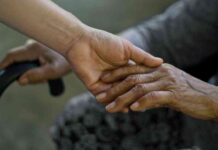In 2012, Shannon Withycombe experienced a miscarriage at eight weeks into her pregnancy. However, instead of being told she had a miscarriage, she saw the term “incomplete abortion” on her discharge papers. This term, common in 19th-century medical journals, refers to a miscarriage where not all the tissue has exited the uterus. This experience made Dr. Withycombe, a medical historian, realize how society has socialized us to view miscarriage and abortion as completely different things.
Interestingly, physiologically, miscarriage and medication abortion are quite similar. They both involve a decrease in pregnancy-maintaining hormones, vaginal bleeding, and the uterus contracting to expel pregnancy tissues. The tools and medications used to manage both are also often the same, highlighting how laws restricting abortion care can also impact women experiencing miscarriages.
In the 1800s, the term “abortion” was commonly used to describe any form of early pregnancy loss, alongside the more informal term “miscarriage.” It was modified with terms like “spontaneous,” “missed,” or “habitual” to provide more context. This historical perspective sheds light on how the medicalization of miscarriage and the moralization of abortion have evolved over time.
Understanding the historical context of women’s reproductive rights is crucial in appreciating the progress made and the challenges that still exist today. By examining how language and societal perceptions have shaped the discourse around miscarriage and abortion, we can better advocate for comprehensive and compassionate reproductive healthcare for all individuals.
As we navigate the complexities of reproductive rights in the 21st century, it is essential to recognize the interconnectedness of various reproductive experiences. Whether it is a miscarriage, medication abortion, or any other reproductive health issue, individuals deserve access to respectful and non-judgmental care.
By reflecting on the history of women’s reproductive rights, we can work towards a future where all individuals have autonomy over their bodies and choices. The journey towards reproductive justice is ongoing, but by learning from the past, we can pave the way for a more equitable and inclusive future for all.

















